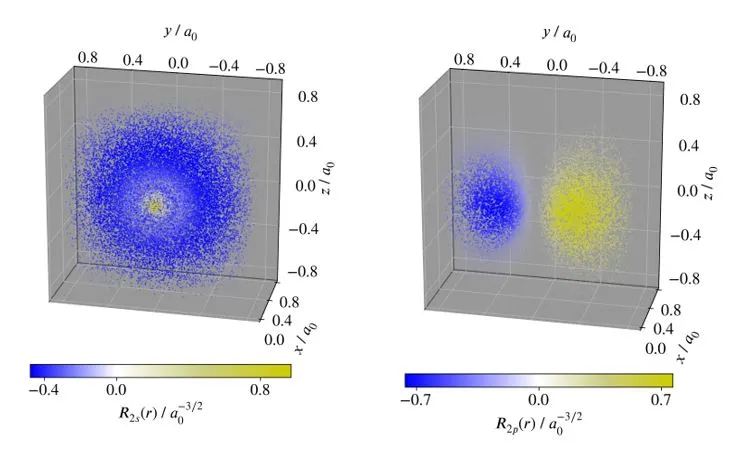Reconstruction of atomic electron densities
PTB researchers have further developed the procedure and the mathematical methods for visualising the spatial distribution of electrons in the atom
Reconstructing the spatial electron density of atomic systems not only provides new insights into quantum mechanics, but also advances in areas such as material science and functional surfaces. In the photoelectric effect, photoelectrons are emitted through interaction with light. Their measured energy and directional distribution can be visualized as a mathematical representation of the spatial distribution of electrons in the atom. Using complex mathematical methods, the spatial distribution of the electron density can thus be calculated from the energy and directional distribution of the photoelectrons.
With the help of synchrotron radiation, electrons are triggered and measured via the photoelectric effect and the molecular electron densities are reconstructed from this. Such reconstructions were previously only possible for molecules that were prepared in an ordered manner on crystal surfaces, so that the mathematical method could be simplified for reasons of symmetry. However, this simplification only allowed reconstruction on a relative scale and showed deviations from measured data.
In a recently published paper, the procedure and the mathematical methods were adapted to free noble gas atoms for the first time and a reconstruction was carried out on an absolute scale. High-precision measurement data are available for noble gas atoms, which were used to verify the newly obtained results. In future, the data and findings for noble gas atoms can serve as a reference for the reconstruction process of the electron densities of more complex molecules on surfaces to ultimately calculate these on an absolute scale and improve the mathematical models.
This work was carried out as part of a collaboration with the Forschungszentrum Jülich and the University of Graz and was funded by the German Research Foundation (DFG).
Publication:
Phys. Rev. A 109, 012814 (2024): Quantitative reconstruction of atomic orbital densities of neon from partial cross sections
Hans Kirschner, Alexander Gottwald, Victor Soltwisch, Mathias Richter, Peter Puschnig, and Simon Moser
DOI:10.1103/PhysRevA.109.012814
Contact:
Physikalisch-Technische Bundesanstalt
Division 7 Temperature and Synchrotron Radiation
Hans Kirschner
Working Group 7.13 UV and VUV Radiometry
hans.kirschner(at)ptb.de
Press release PTB, 12 February 2024
